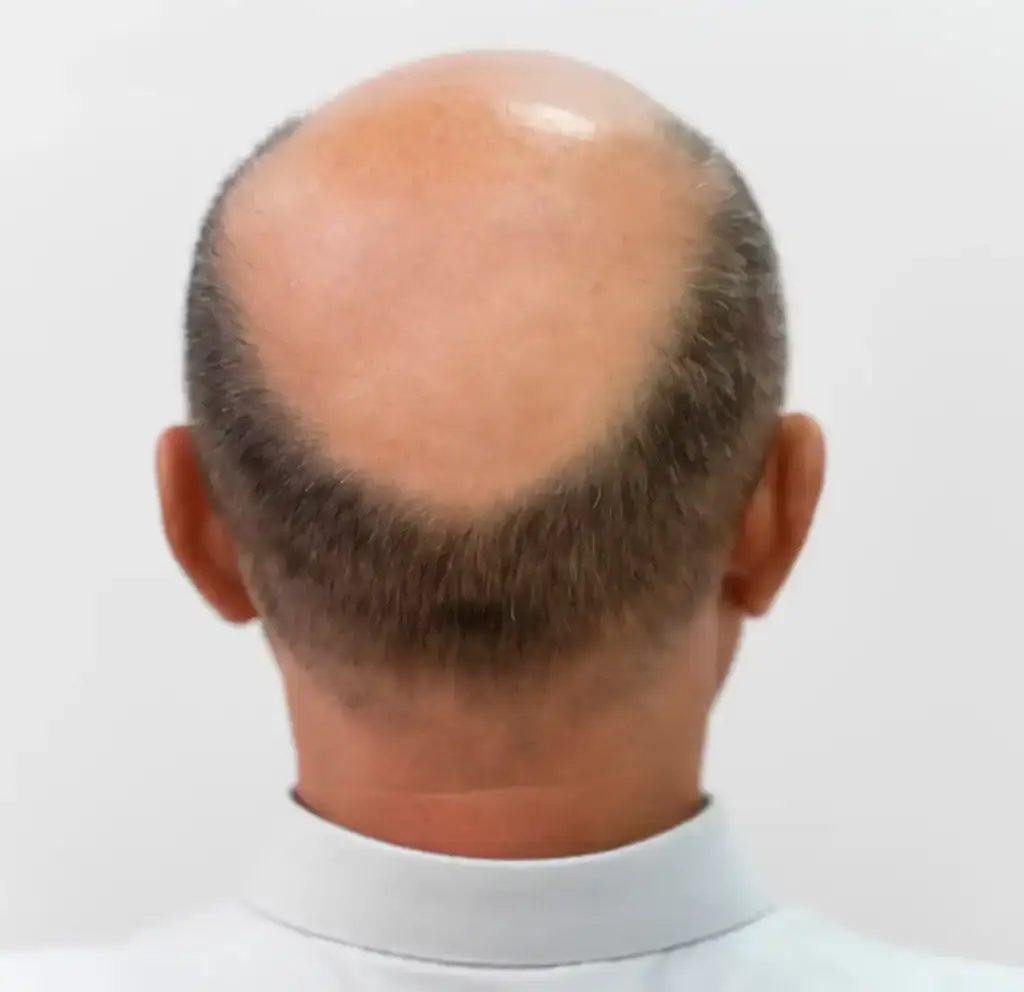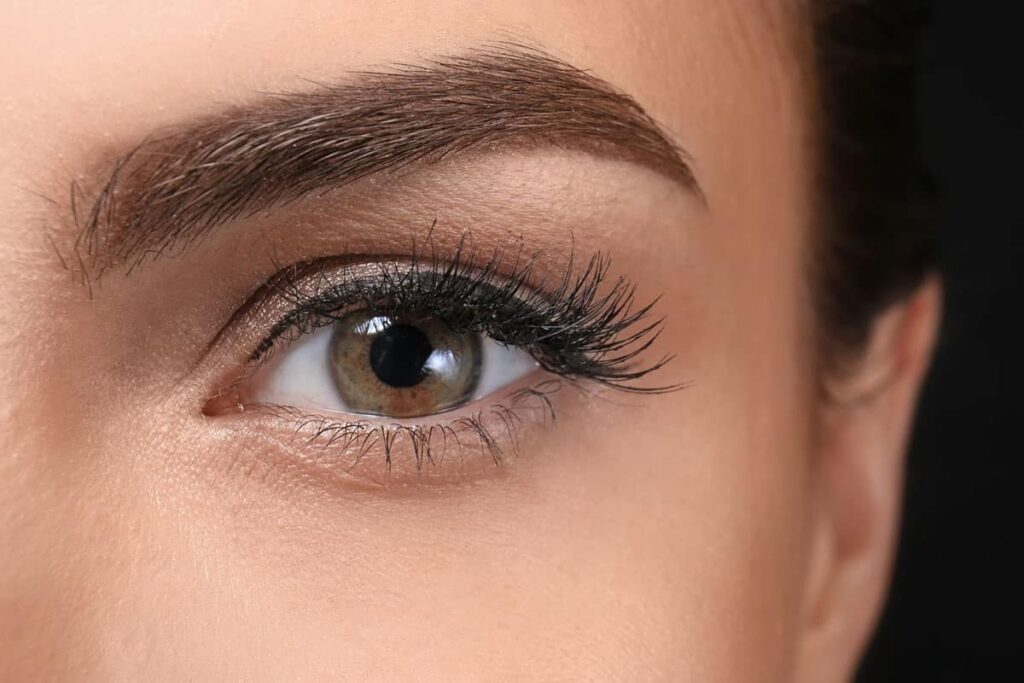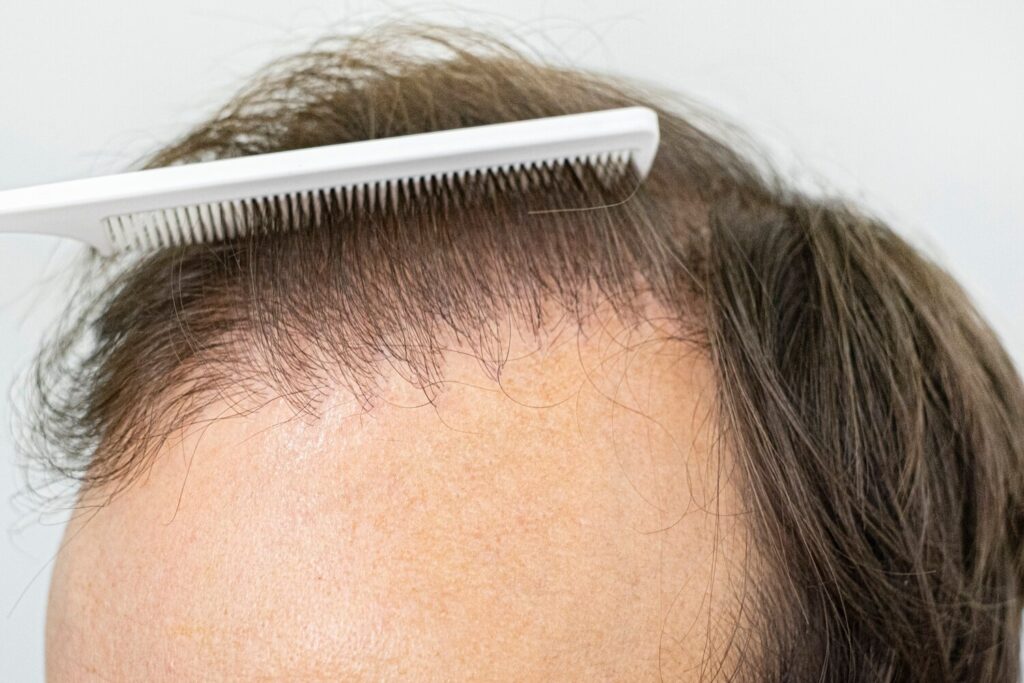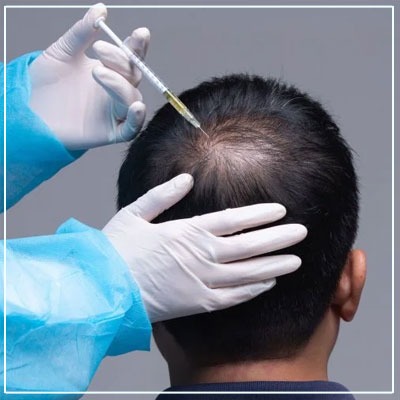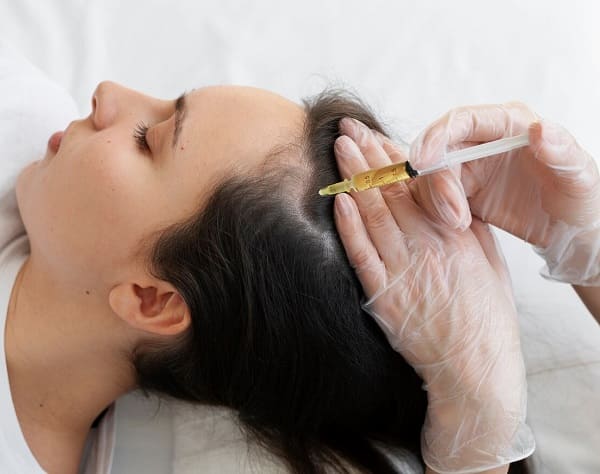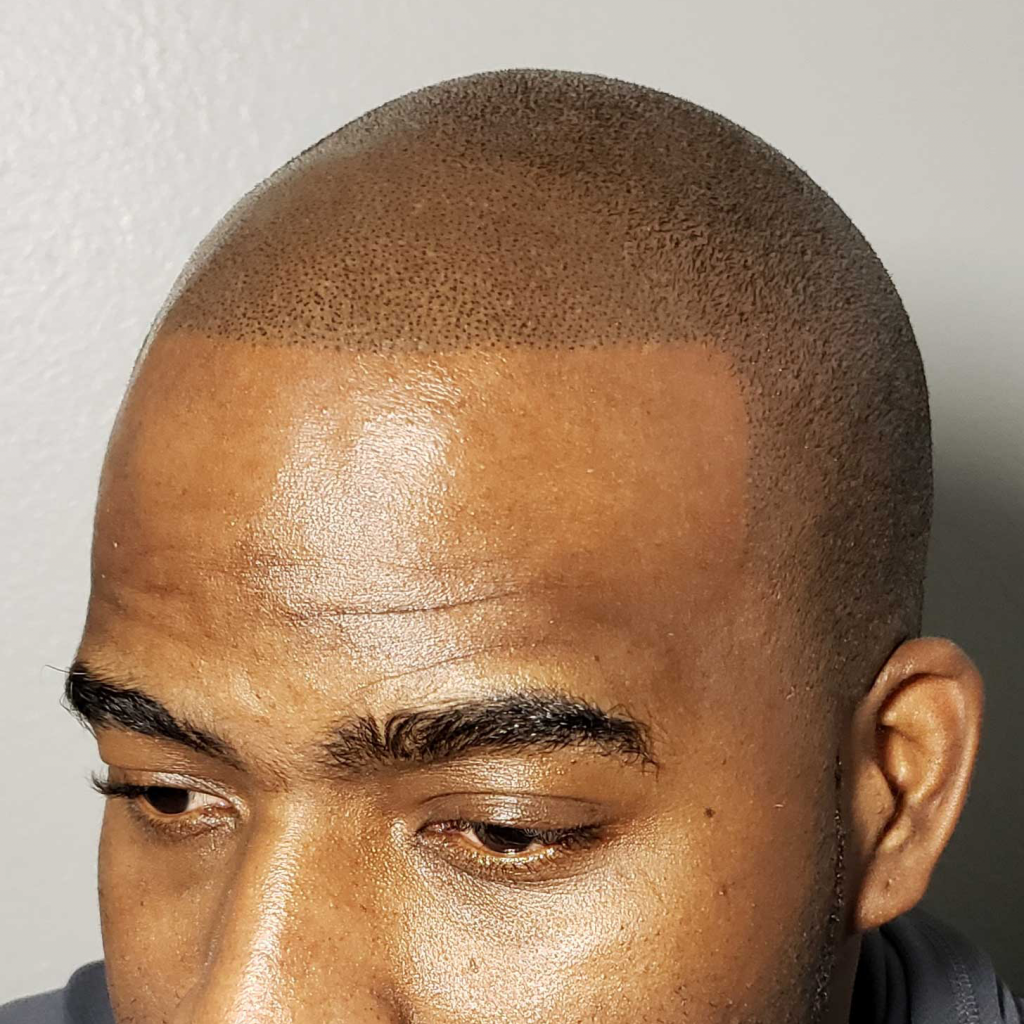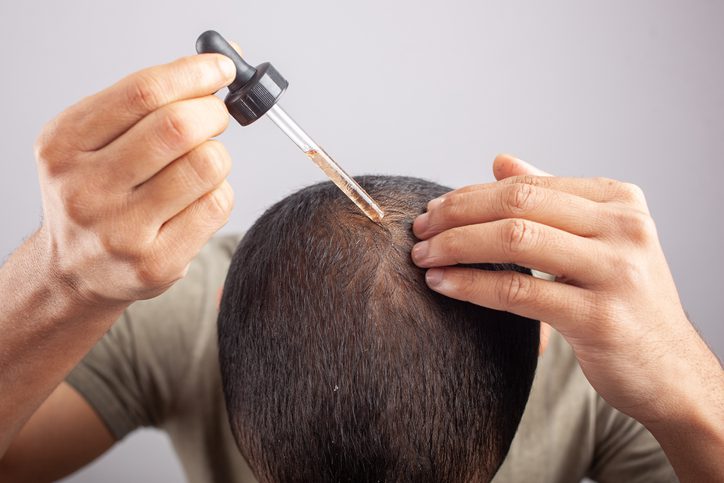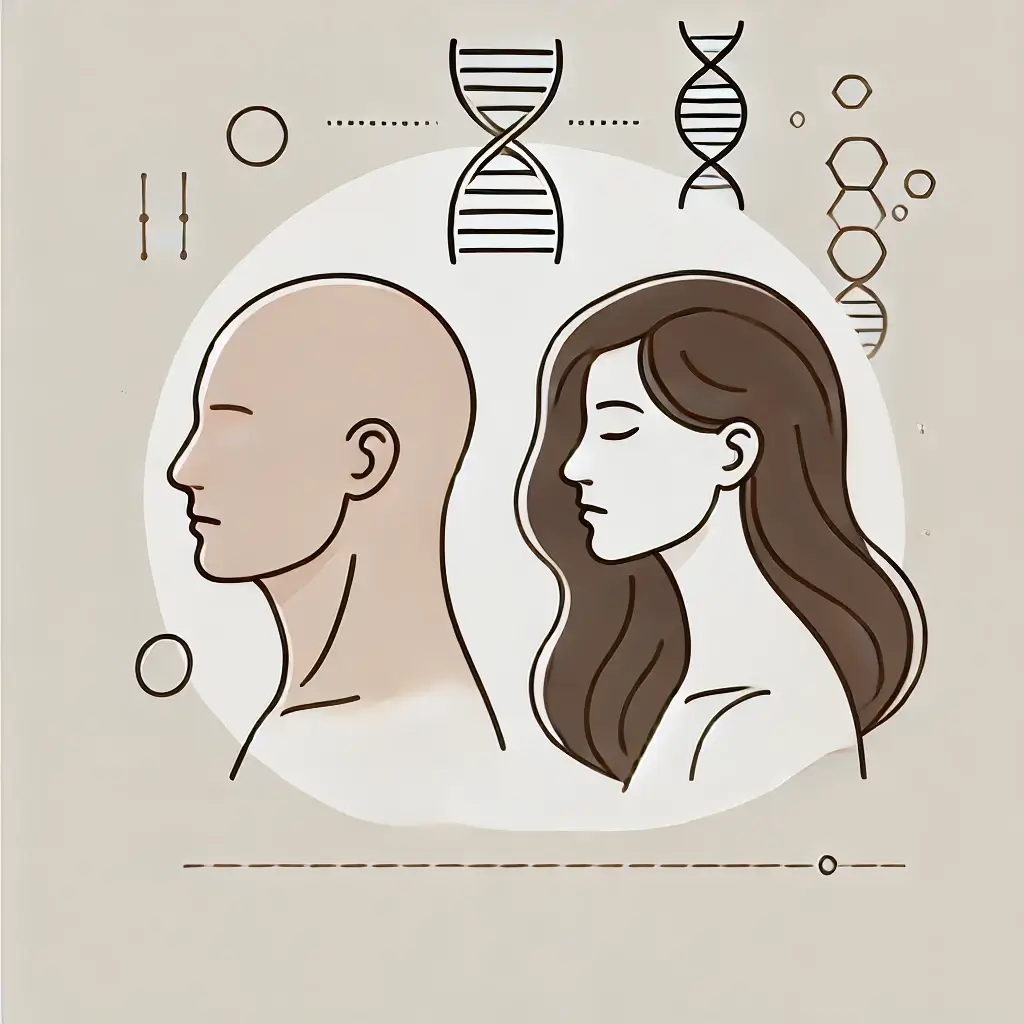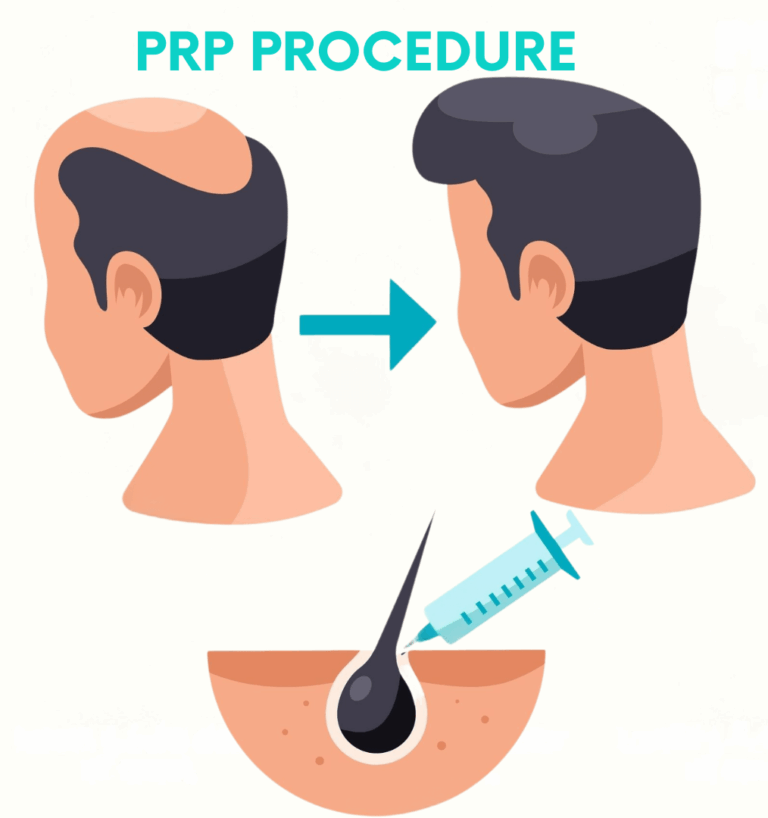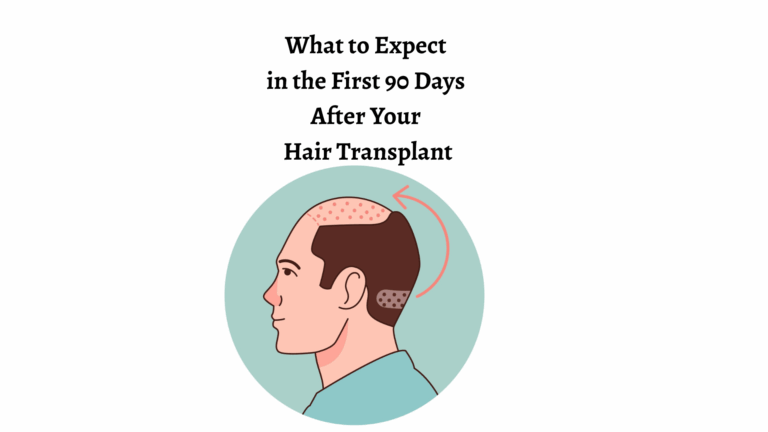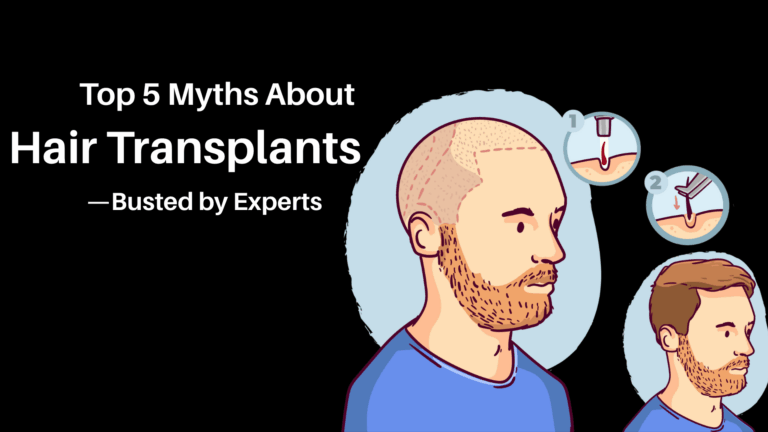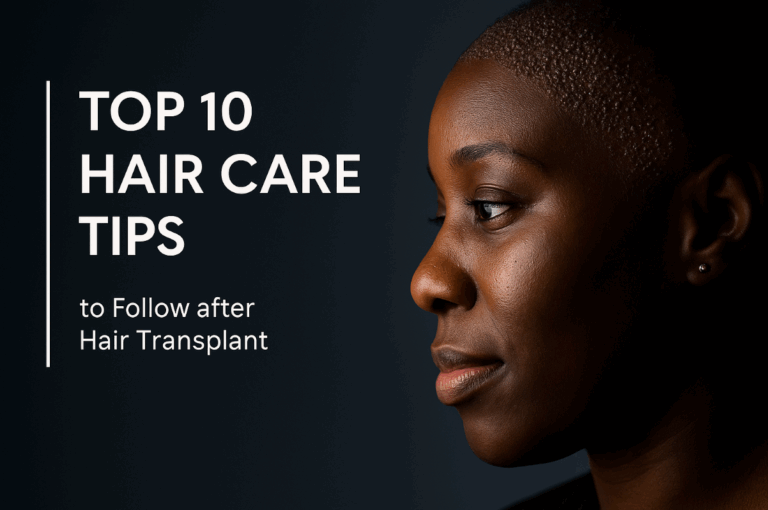Both men and women can experience hair loss, but it’s usually more noticeable in men because they often have distinct patterns of baldness. How baldness appears varies between men and women because different factors affect each gender.
Men typically have higher levels of DHT than women, which contributes to the higher prevalence of baldness in men. Genetic factors also play a significant role; the inheritance of specific genes related to hair loss is more common in men. While female pattern baldness is also influenced by genetics and hormones, it generally follows a different pattern and is less prevalent.
The Gender-Specific Factors of Hair Loss
Pattern hair loss, also known as androgenetic alopecia, can affect both men and women. Unfortunately, it results in permanent hair loss. This means that once the hair in certain areas of the scalp is affected, it won’t grow back on its own.
It’s a known fact that men usually experience male pattern baldness, which involves a receding hairline and thinning hair on the top of the head. This pattern is primarily due to genetics and hormones, and it tends to happen gradually. Meanwhile, women are more likely to have overall thinning of hair without a specific balding pattern, which is known as diffuse hair loss. Female hair loss is also influenced by genetics and hormones, but factors like childbirth, menopause, and certain medical conditions can also contribute to hair thinning in women.
Understanding Male Hair Loss
Hair loss can affect them, causing thinning hair, a receding hairline, bald patches, or complete baldness on the crown area. It is widespread, and it can be caused due to various reasons, but the most common reasons are-
- Hormones
- Genetic
- Age
Understanding Female Hair Loss
Hair loss in women can be seen as thinning hair, gaps in the parting line, or bald patching. It is usually less visible than in men due to different hair loss patterns, and the reasons for hair loss in women are more diverse.
- Hormonal Imbalances & Changes
- Medical Conditions
- Genetics
- Age
Gender-Specific Factors in Hair Loss: Implications for Personalized Treatment Approaches
Personalized Treatment Approaches
Understanding the gender-specific factors influencing hair loss is essential in developing targeted treatment approaches for male and female pattern baldness. By considering the unique mechanisms underlying hair loss in each gender, healthcare providers can tailor interventions to address the specific needs and challenges associated with male and female pattern baldness. Additionally, raising awareness about the diverse factors contributing to hair loss in both men and women can help individuals make informed decisions about managing and seeking treatment for this common concern. Ultimately, a deeper understanding of the gender-specific aspects of hair loss can pave the way for more effective and personalized interventions to address this prevalent condition.
The Bottom Line
In conclusion, male pattern baldness is more common than female pattern baldness due to higher levels of DHT in men, genetic predisposition, and distinct hair loss patterns. Female hair loss, on the other hand, is influenced by hormonal imbalances, medical conditions, genetics, and aging. The different patterns of baldness in men and women can help in effectively addressing and managing hair loss. When addressing male and female pattern baldness, hormonal influences, genetic predisposition, age, and medical conditions must be considered.
